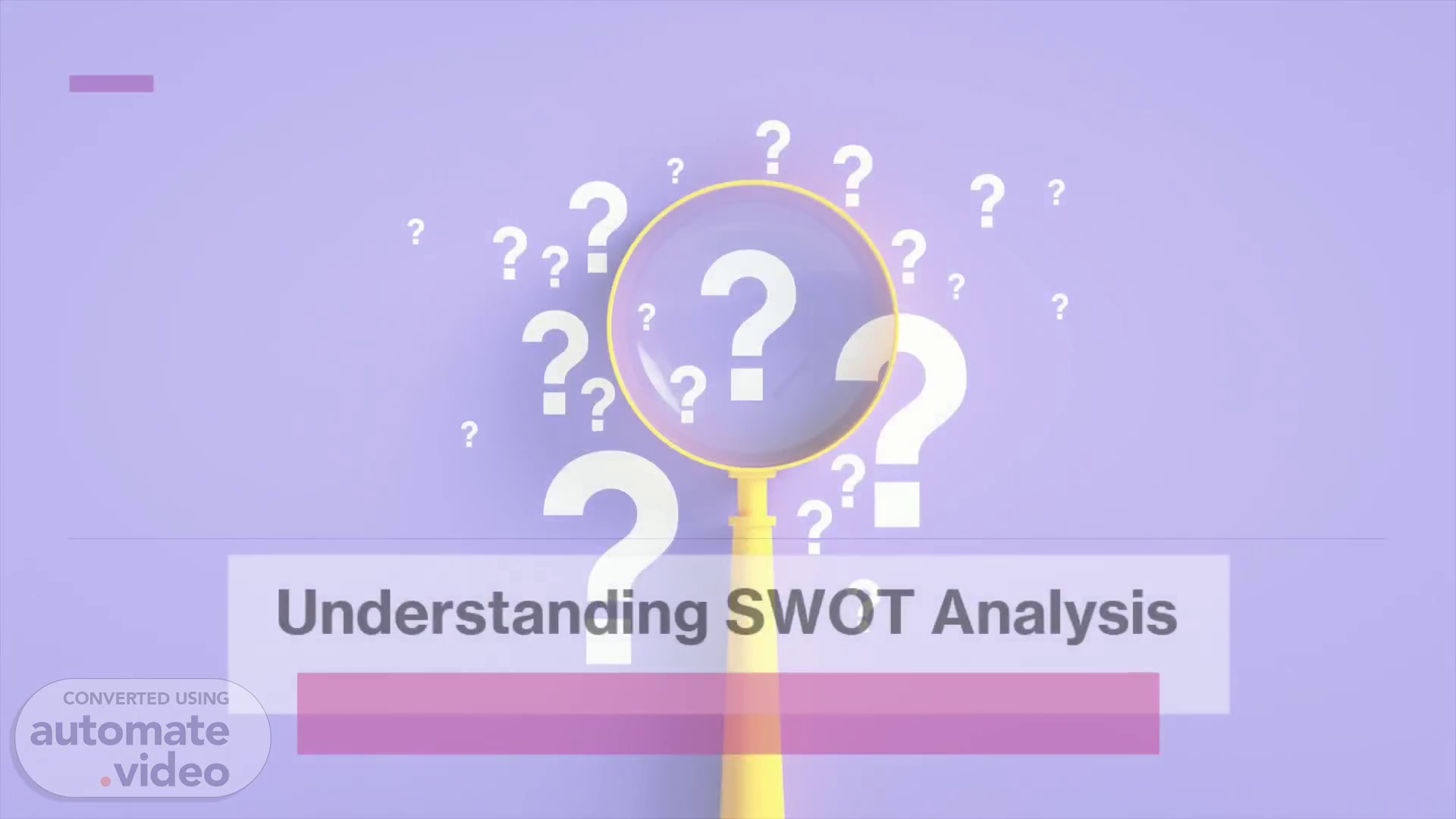
Page 1 (0s)
[Audio] WELCOME TO TOPWORKER. TODAY WE WILL BE DISCUSSING ABOUT SWOT ANALYSIS, a strategic framework for assessing and improving your business..
Page 2 (10s)
[Audio] SWOT stands for Strengths, Weaknesses, Opportunities, and Threats. It's a critical tool that helps organizations gain insights into their current situation and make informed decisions for the future.".
Page 3 (38s)
[Audio] Today, we'll start by diving into the 'Strengths' component of SWOT analysis. Strengths are your internal assets and advantages. Think of them as the foundation of your success. For example, having a loyal customer base, innovative products, strong financial performance, talented employees, and efficient processes are all examples of strengths.".
Page 4 (1m 4s)
[Audio] Now, let's discuss 'Weaknesses.' Weaknesses are internal limitations or deficiencies that hinder your organization's success. They're areas that need improvement. Examples of weaknesses include high employee turnover, limited access to capital, outdated infrastructure, inadequate training programs, and poor management.".
Page 5 (1m 27s)
[Audio] "Moving on to 'Opportunities,' these are external factors or trends that your organization can leverage for growth or improvement. They represent potential avenues for expansion. Opportunities could be emerging markets, strategic partnerships, growing customer segments, or changes in consumer preferences.".
Page 6 (1m 51s)
[Audio] "And finally, we have 'Threats.' Threats are external factors or risks that may harm your organization. Identifying and mitigating threats is crucial for resilience. Examples of threats include industry regulations, cybersecurity threats, supply chain disruptions, and economic uncertainties.".
Page 7 (2m 13s)
[Audio] Now that we've explored the four components of SWOT analysis, it's time to put it all together. We create a SWOT matrix, combining strengths, weaknesses, opportunities, and threats to gain a comprehensive view of our organization. This matrix serves as the foundation for strategic planning, helping us align strengths with opportunities and address weaknesses and threats.".
Page 8 (2m 39s)
[Audio] Before we move forward, let's consider some best practices and tips for conducting an effective SWOT analysis. To make the most out of this tool, it's important to continuously review and update it, involve key stakeholders, maintain objectivity, and avoid common mistakes like overlooking critical factors or confirmation bias.".
Page 9 (3m 8s)
[Audio] Before we wrap up, we invite you to ask any questions or share your thoughts. We're here to discuss SWOT analysis and how it can be applied to your specific situations. Your input and questions are greatly appreciated." Before we wrap up, we invite you to ask any questions or share your thoughts. We're here to discuss SWOT analysis and how it can be applied to your specific situations. Your input and questions are greatly appreciated." Before we wrap up, we invite you to ask any questions or share your thoughts. We're here to discuss SWOT analysis and how it can be applied to your specific situations. Your input and questions are greatly appreciated." THANK YOU..